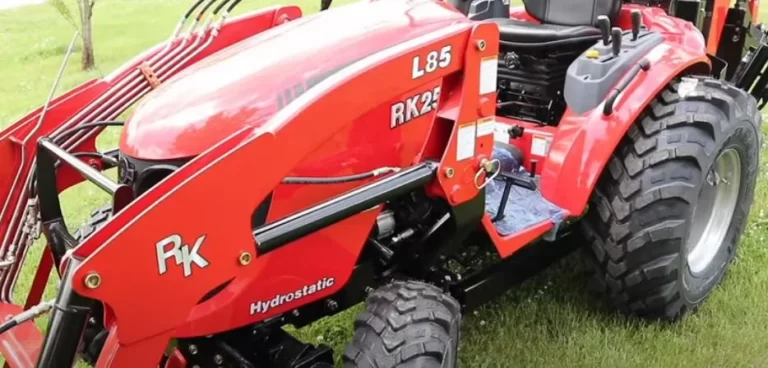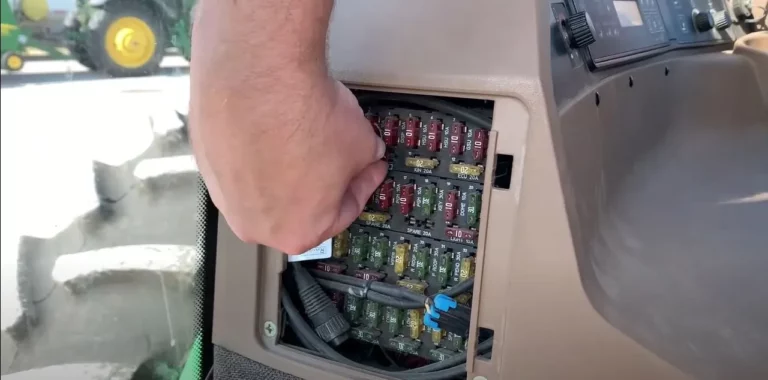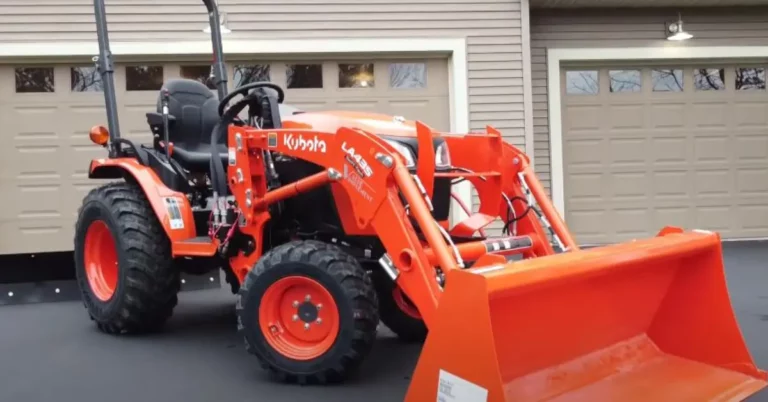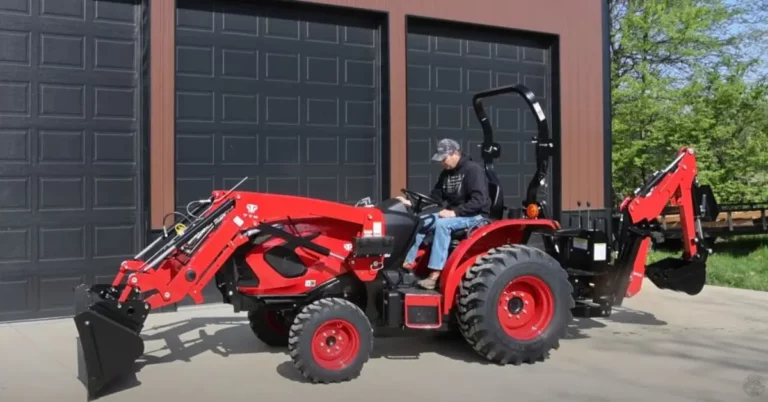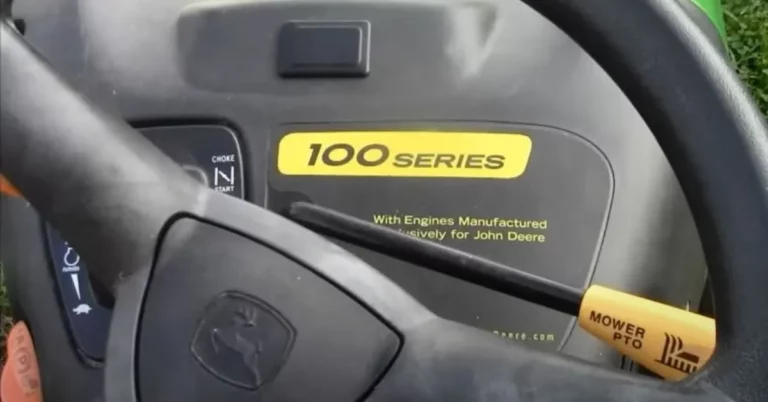John Deere Hydrostatic Transmission Problems (Fixed)
Have you been experiencing John Deere hydrostatic transmission problems? But you are unsure what’s causing the problem or how to fix it.
Don’t worry, as in this article, I’ll discuss some common problems, such as faulty clutch operation, low oil pressure, and slow response time. I’ll also explain solutions like replacing affected parts, refilling the oil, cleaning the debris, etc.
In the end, I’ll also share some effective tips to avoid these problems in the first place.
So, keep reading till the end to get your problem solved.
John Deere Hydrostatic Transmission Problems And Solutions
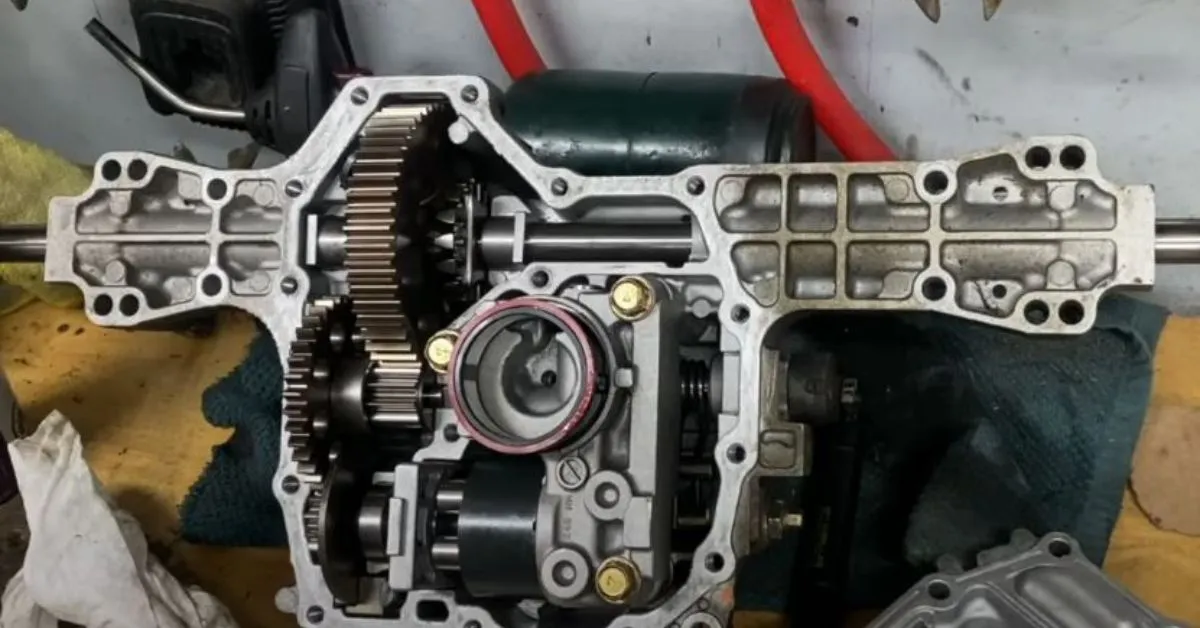
Doubtlessly, it’s imperative to pinpoint the exact problem. So that you can go for the possible solutions to enhance the efficiency of your John Deere Hydrostatic Transmission.
So, here I’ll reflect on the most prevalent problems and their solutions.
1. Problematic Clutch Operation
Are you experiencing difficulties in engaging or disengaging the clutch? If yes, it could be due to a worn clutch or pressure plate.
This issue may produce other problems, such as shaky shifting during driving equipment and reduced acceleration.
Also Read: List of 10 John Deere Zero Turn Steering Problems -(Fixed)
Solution
The solution to this problem is to replace the worn parts or have the clutch system repaired.
It’s also important to check the clutch system periodically to ensure proper operation and to prevent further damage.
In addition, you should check out the flywheel and pressure plate and change it if it’s damaged.
2. Frequent Stalling
Stalling can occur if there is a problem with the transmission pump, motor, or other components.
All these reasons can cause the lawn mower to shut off unexpectedly.
It’s also possible for stalling to be caused by issues outside of the transmission system.
These problems include malfunctioning engines, electrical issues, or fuel delivery problems.
Solution
So, to fix this issue, first examine various components such as the motor, pump, etc. You should also inspect for electrical issues.
And, if there is an issue with any part, try to replace or repair it depending on the condition.
Also Read: John Deere Fault Code List
3. Noise Coming From Transmission
Your John Deere machine is producing unusual noises while shifting gears. It could be due to several reasons, such as damaged gears, worn bearings, or synchronizers.
Noise issues can also occur due to a lack of lubrication. This problem can affect the machine’s performance and longevity.
Solution
You can either replace the damaged parts or rebuild the transmission system to fix this problem.
It’s important to check the transmission system periodically to ensure proper operation and to prevent further damage.
You should also inspect for clogged fuel filters and lines. And, also check all the hoses and connections and make sure there is no leakage.
Additionally, it’s recommended to use high-quality hydraulic fluid and to maintain proper fluid levels.
Also Read: John Deere 180 Transmission Problems – How To Fix Them?
4. Power Output Is Low
John Deere machines not delivering the expected power output is another common problem.
It can be due to several factors, such as a slipping clutch, a hydraulic system issue, or a clogged transmission filter.
Solution
To fix this problem, you can replace the clutch or clean/replace the filter, depending on the cause.
Apart from that, check the hydraulic system, and if there is any issue, fix it.
5. Low Oil Pressure
Low oil pressure can cause your John Deere hydrostatic transmission to overheat, slip gears, or fail.
The cause of low oil pressure could be a clogged oil filter, a worn pump, or damaged seals.
You can also face this issue if components are improperly lubricated or due to less transmission fluid.
Solution
You can replace the filter, pump, or seals to fix this problem, depending on the cause.
It’s important to ensure that you use the right type of hydraulic fluid and maintain proper fluid levels.
You should also refill the transmission oil and examine for leaks at recommended intervals.
6. Leakage of Transmission Fluid
Transmission fluid leaks can cause your John Deere’s transmission to overheat, slip gears, and fail.
Over time, the seals that prevent fluid from leaking out of the hydrostatic transmission can be damaged, leading to fuel leakage.
If a gasket is damaged or installed incorrectly, it can also cause fuel to leak out.
Additionally, loose fittings or connections between the hydrostatic transmission and the engine can cause fuel to leak out.
Solution
You can replace the damaged part, such as seals or gaskets, to resolve this problem.
It’s also important to ensure you use the right type and level of hydraulic fluid.
7. Overheating Issue
If the transmission fluid level is low, it can cause the transmission to overheat.
This can happen if there is a system leak or the fluid has not been properly topped off.
Transmission fluid can become dirty or contaminated with debris, which can cause the transmission to overheat.
If the filter becomes clogged, it can restrict fluid flow, leading to overheating.
You should also examine the cooling fins for any blockage or presence of debris.
If the transmission components, such as the pump or motor, become worn or damaged, it can also cause the transmission to overheat.
Solution
To fix this problem, you can replace the damaged or affected parts. And check oil levels as well.
You should also check the machine’s cooling system and ensure it functions properly.
8. Poor Response Time
Another common problem with John Deere hydrostatic transmissions is poor response time.
The transmission may hesitate or slip when shifting when the response time is poor. Or it may take longer than usual to engage the gears.
Various factors, such as low fluid levels and dirty or contaminated fluid, can cause this problem.
Additionally, blocked filters or air trapped in the system may give rise to poor response time.
Solution
The solution to poor response time will depend on the underlying cause of the problem.
Adding more fluid may solve the problem if the fluid levels are low.
And if the fluid is dirty or contaminated, the transmission may need to be flushed and refilled with fresh fluid.
Additionally, if the clutch plates are worn, you must replace them.
Identify and address the root cause of the problem to prevent further damage to the transmission.
Also Read: John Deere 100 Series Transmission Problems – Fixed!
9. Slipping Gears Problem
Slipping gears is another disturbing issue of John Deere hydrostatic transmission. This problem arises while accelerating or decelerating.
Some common causes that lead to this issue include filth that hinders the flow or low oil levels.
Solution
You can resolve this issue by cleaning the dirty compartments. Plus, if they are in bad condition, you must swap them.
Check the oil levels; if oil is insufficient, consider adding more.
Prevention Tips For Hydrostatic Transmission Problems
Prevention tips are important to avoid these issues and extend the life of your John Deere Hydrostatic transmission.
So, here I’ll discuss some prevention tips that you should follow.
Regular Maintenance And Servicing
Regular maintenance and servicing are among the most important prevention tips for John Deere Hydrostatic transmission problems.
This includes changing the hydraulic fluid, filters, and seals at the recommended intervals specified in the manual.
Regular maintenance also involves checking the transmission for leaks and inspecting the belts and pulleys for wear.
You should also ensure that all components are properly lubricated.
Read Instructions Manual
Another important prevention tip is to read the manual thoroughly and follow the manufacturer’s recommendations for operation and maintenance.
The manual provides detailed instructions on properly using and maintaining the transmission.
By following the manual’s instructions, you can avoid many issues that arise from improper use or maintenance.
Use Quality Hydraulic Fluid
Using top-quality hydraulic fluid is also crucial to prevent John Deere hydrostatic transmission problems.
The hydraulic fluid provides lubrication and cooling for the transmission components.
It also helps to transfer power from the engine to the wheels. Using a lower-quality or incorrect type of hydraulic fluid can cause damage to the transmission.
And it may also lead to premature wear and tear. So, be sure to use only the recommended hydraulic fluid.
You can consider purchasing this hydraulic fluid for your John Deere. But remember that its efficiency may vary depending on your model.
Also Read: 4 Best John Deere Cool-Gard Alternatives
Use Mower Properly
It is also important to use the mower properly to prevent problems.
This includes avoiding sudden acceleration or deceleration and not towing or hauling loads that exceed the manufacturer’s recommended limits.
Avoid using the transmission in conditions that can cause excessive wear or damage. These conditions include deep water, mud, or heavy snow.
Frequently Asked Questions (FAQs)
How long does hydrostatic fluid last?
The durability of hydrostatic fluid relies on multiple factors.
Here are the common factors:
1. Oil quality
2. Potential contamination
3. Operating conditions
4. Type of model
What are the symptoms of low hydrostatic transmission fluid?
There are several symptoms of low hydrostatic fluid.
Here I will enlist some of them:
1. Slipping gears
2. Funny, weird noise
3. Problem shifting gear
4. Slow gear engagement
Is hydrostatic better than manual?
Well, this depends on the specific application and the user’s preferences.
Hydrostatic transmissions offer several advantages over manual transmissions, such as ease of use and control.
Hydrostatic transmissions use hydraulic pressure to transfer power, making them smoother and more responsive than manual transmissions.
Conclusion
John Deere hydrostatic products are known for their efficiency, reliability, and durability.
However, like any mechanical system, they are susceptible to wear and tear, which can lead to different problems.
But the solution methods I mention in this article can assist in solving the issue.
You should also follow the preventive tips to alleviate the probability of these issues.

